I'm using DML's kit # 9040 along with a Jordi Rubio replacement barrel, Armorscale MG34 for the hull MG, and Aber engine deck screens. This kit is an older release/rebox as an "Imperial Series" kit and one of the things that's readily apparent with this kit is that DML took the path of using existing molded parts from various StuG III and Pz III kits and threw in additional unique parts to "backdate" this kit to an E model. That means there are a lot of extra/un-used parts but also quite a bit of surgery, hole filling, modifications, etc. required as part of the build-up. This makes the kit a more interesting exercise than might be usually expected but also requires more care and attention to do the changes in the right spots!
Let's begin at the beginning...a very good place to start! Step 1 on this build directs you to assemble all the roadwheels, drive sprockets, idlers, and return rollers for both sides. This is done largely without incident but some care is required as the sprockets have multiple sprue connection points (5) on each half, the interior half also has a cross piece that has to be carefully removed to allow it to fit properly in Step 4. The return rollers also require care as they have 4 connection points on each half while the road wheels only have 2 for most with a couple also having 3 depending on where they sit on the sprue.
The roadwheel halves each have a mold seam on the tire, although not huge, it still required cleanup attention...12 halves per side meant by the time I was done, I had a nice cramp in my right hand from gripping the sander. :-)

Step 2 is where I did some work previously during the week (2-3 hours) but needed more today to complete the other side. No real hangups here except that the instructions have parts B13/14 backwards in the callouts, all the other parts are correct for their respective sides. The suspension arms required some cleanup due to the prominent mold seam on each one but easily taken care of. Surgery to remove the first molded in return roller mount and replace it with a separate part in the correct position for an E is called for. The instructions give you placement directions down to a tenth of a milimeter...and since I don't have calipers or anything quite that sensitive, I used the old Mk. 1 eyeball and a straightedge to do the placement.
I also took a little care with the idler wheel mount (parts B16, B28, and A13/12) to allow the idler arm to be moveable/tensionable for later on when the track installation is done. Instructions tell you to glue it all down solid, but a little bit of care is all that's required to achieve this little extra benefit.
Also filled the extra hole on the hull with a little bit of Squadron white putty per the instructions as only one will be needed to take the fender mounting brackets later on.

Step 3 also requires more surgery as the rear hull plate has a later version molded on fitting that has to be removed and replaced with an included correct separate part, K19. Fairly easy to remove with sprue cutters and then sand down the remainder to take the replacement part.
The mufflers (A35/36) are molded as for a later model that would take a heat sheild and have two prominent holes in each as a result. These were filled and sanded as the E did not have the heat shield, just the bare mufflers. I also drilled out the exhaust pipes a little deeper as the molded part was too shallow for my taste.
The installation of the plate into the hull tub was a little tight, required some thin Testors liquid glue and a little fiddling to get it to fit properly. Finger pressure and a little patience overcame this with no problem.

Step 4 calls for all the running gear to be installed, but I usually leave this off to later in the build to allow easier access for painting and weathering. The drive housings were installed on both sides along with the protective covers on the shocks. The hull comes with molded in position lines for the escape hatches, these were sanded down and the hatches installed on both sides. I used a little bit of blue tac to mount the return rollers to take the photo, they have a very shallow post that fits into the mounts and, having built similar kits previously, know they are a pain to mount and set up straight...but that's a pain for later.
 All the wheels are dryfit and when mounted some minor adjustments will be required at that point to get them to sit nice and straight.
All the wheels are dryfit and when mounted some minor adjustments will be required at that point to get them to sit nice and straight. 
Step 5 is the track installation and that will be skipped until after painting, so tomorrow will begin the work on the upper hull with Step 6.













































































